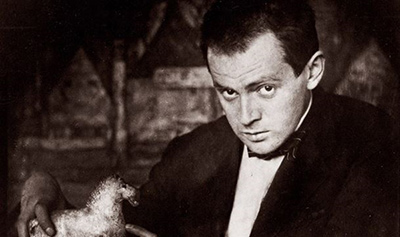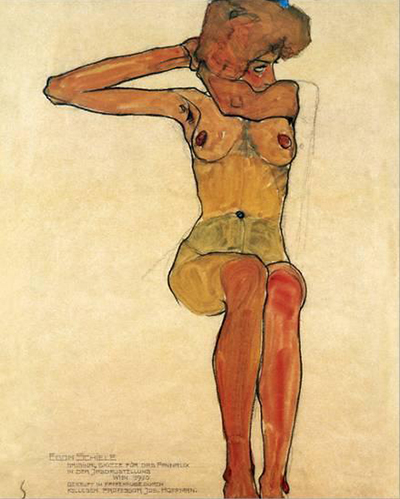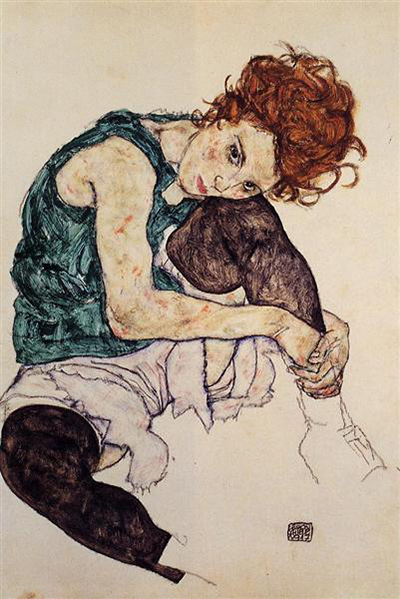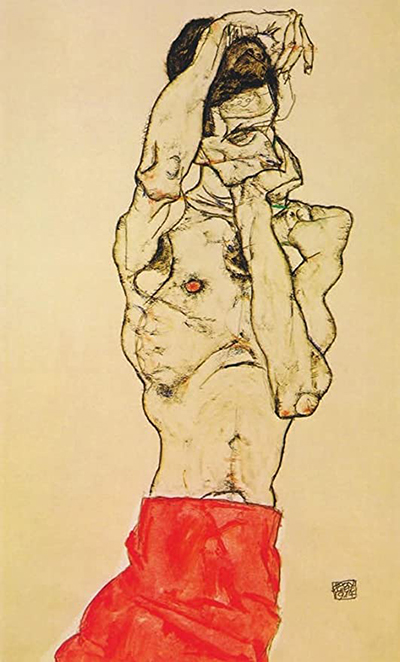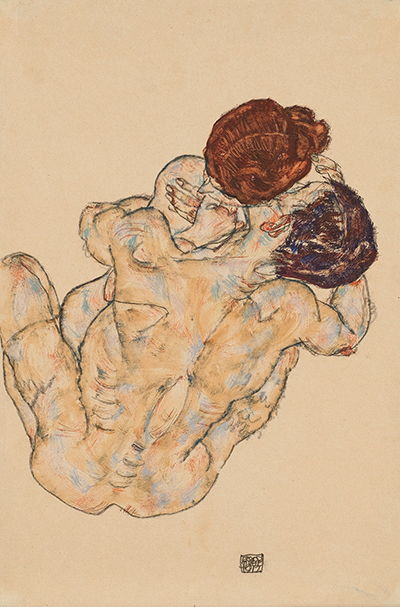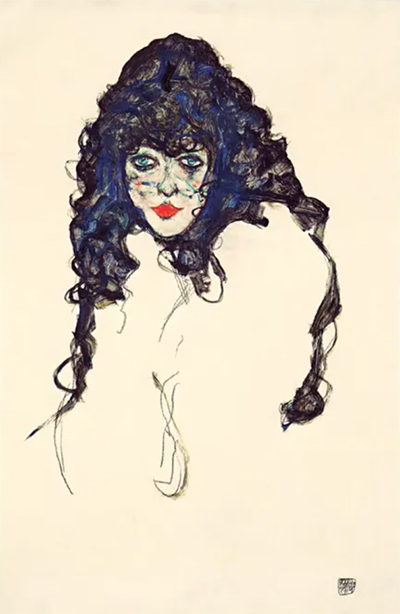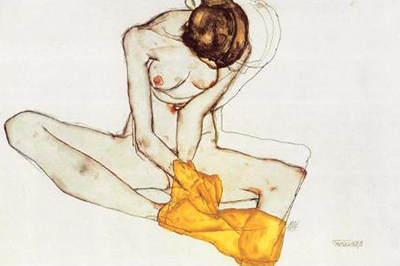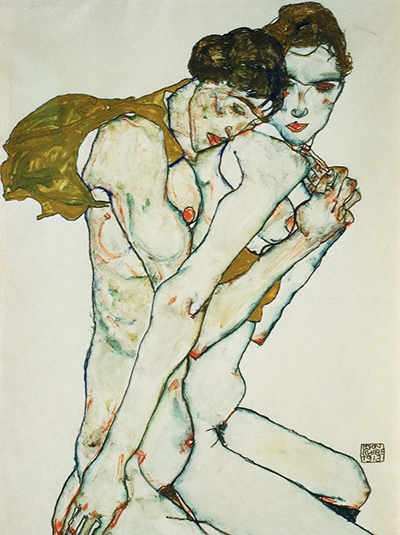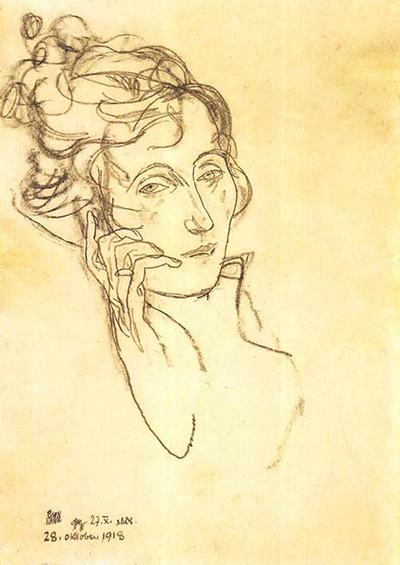Behind the extravagance of colour and oil would always be the raw draughtsmanship which set the basis for all of Schiele's paintings. Here we examine his most famous drawings.
Schiele continued Klimt's passion for female portrait sketching, constantly looking to refine his skills through practice and experimentation. Both would use pencil and chalk on a variety of paper types. Picasso and Klimt held a similar desire for simplicity when it came to this art form - concentrating purely on constructing form from the most minimalist of lines. Some sketches would go into much greater detail, particularly study pieces for large scale paintings, but many simpler drawings were done simply for enjoyment. To see such minimalist drawings is almost like admiring a model without makeup - the raw beauty, untouched and pure. Schiele was able to achieve so much in one's mind, through the suggestion of just a few lines.
Much of the Vienna Secession movement was bold, both in canvas size and also colour. Such work required space and time, whilst simpler drawings could be completed at a whim, with just a small sketchpad and pencil. Passionate artists like this would often get a spurt of inspiration which would need to be satisfied immediately. They could also work whilst travelling, without having to carry all manner of tools with them, and this allowed them to travel through the countryside as well as producing portraits when visiting friends and family. Alternatively, there were also watercolours which was a medium that fell somewhere in between oils and sketching materials, providing colour but without the need for a large easel and multitude of brushes and chemicals. Additionally, there was also the chance to use mixed media together, or make initial drawings to work from when back in the comfort of your studio.
Schiele was a natural draughtsman, both gifted with ability from birth, but also an incredible passion for this medium. He is known to have sketched trains at a very young age from a series of sketchbooks and would sit for hours in order to practice his skills. He then achieved respect at school for what he could do, but was otherwise unsuccessful in all other facets of his school life. This, therefore, offered him confidence and an avenue to continue his life with little else seemingly available. His father did not always encourage him, though, and would normally prefer him to follow more of a traditional line of employment, which his son eventually managed to break away from. Egon's behaviour as a child was also somewhat abnormal and so it was eventually accepted that he would follow his own path, regardless of what advice he had been given by his traditionally-minded father.



